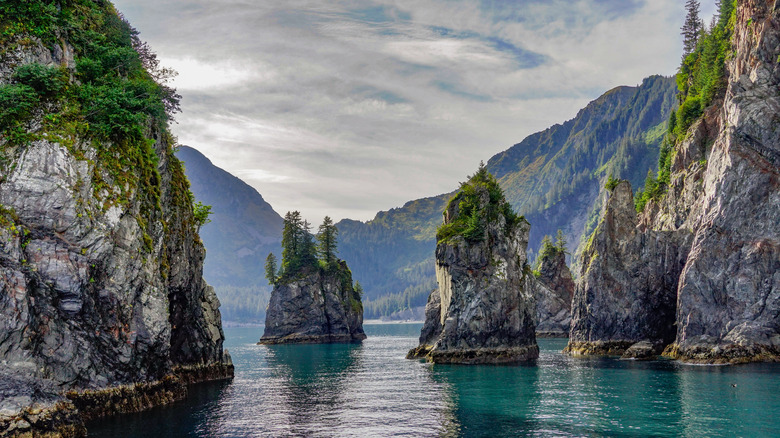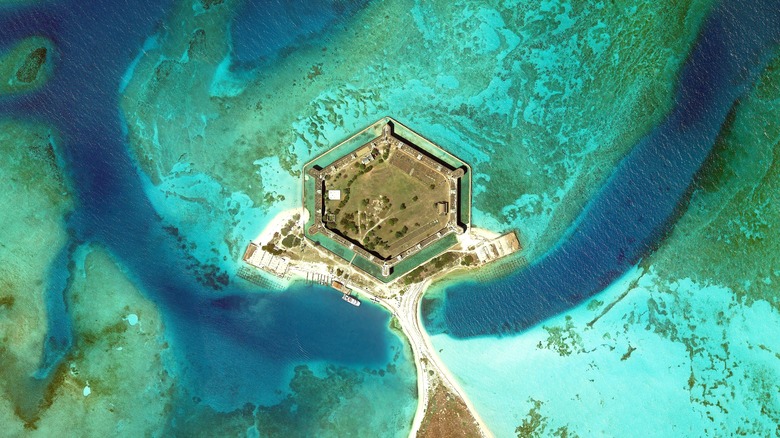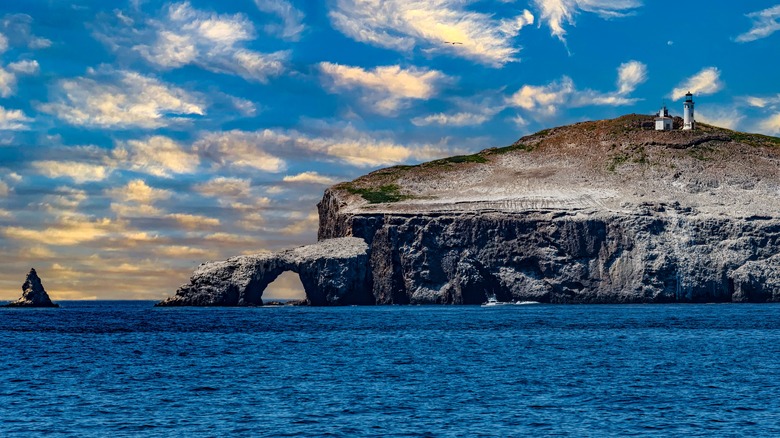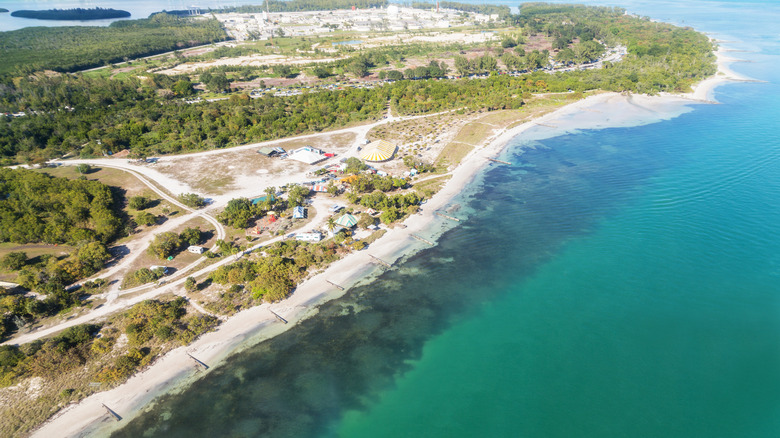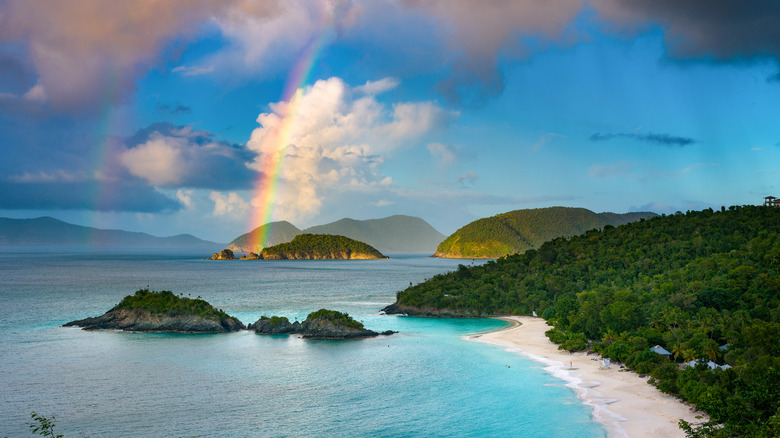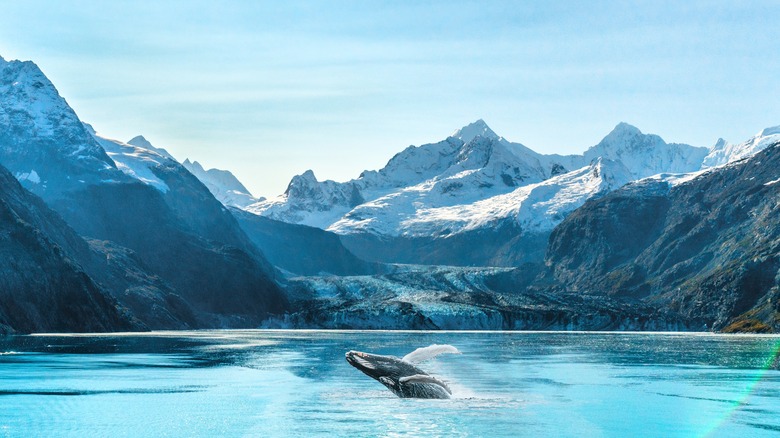Marine National Parks To Explore This Summer
As the summer sun beckons and temperatures rise, there's no better way for outdoor enthusiasts to embrace the season than by diving into the country's most breathtaking marine national parks. That's right — America's National Park Service offers more than towering mountains and sprawling forests; it also protects stunning marine environments that are teeming with life. These semi-aquatic and underwater sanctuaries offer a mesmerizing blend of vibrant coral reefs, diverse marine life, and pristine waters, making them the perfect addition to your national park bucket list – and a wonderful opportunity to connect with nature.
Whether you're seeking the tranquility of crystal-clear lagoons or the thrill of swimming alongside majestic sea creatures, America's marine national parks provide a unique escape into nature's aquatic wonders. Read on to learn about these awe-inspiring destinations that invite you to explore, preserve, and marvel at the extraordinary beauty hidden beneath the waves this summer.
Dry Tortugas National Park, Florida
Approximately 70 miles west of Key West, Florida, Dry Tortugas National Park is a remote and stunning destination that encompasses seven small islands and the surrounding coral reefs. The most common way to reach the park is the Yankee Freedom III ferry from Key West, which offers daily, scenic trips to and from the park. Thrill-seekers can instead take a seaplane with Key West Seaplane Adventures. Over the 40 minute ride, passengers can gawk at breathtaking aerial views of the Florida Keys and the Gulf of Mexico.
Once at the park, Dry Tortugas offers some of the best national park activities that many people don't know about. The clear, warm waters are perfect for snorkeling and diving. The park's coral reefs and shipwrecks are teeming with colorful fish, sea turtles, and other marine life. Popular snorkeling spots include the moat wall around Fort Jefferson and the coral heads near Garden Key. Though sections of these areas were closed in 2023 for coral relocation work, 2024 visitors may be lucky to explore the entire reef system. Of course, like with any marine environment, it's important not to touch or disturb any of the delicate ecosystems.
If you'd like to take your visit overnight, camping is permitted at Dry Tortugas. However, camping at this park is not for the faint of heart. This remote location does not offer many amenities so make sure to brush up on your survival skills before pitching a tent.
Channel Islands National Park, California
A short boat or plane ride off the coast of Southern California lies Channel Islands National Park. This park is an archipelago of five islands — Anacapa, Santa Cruz, Santa Rosa, San Miguel and Santa Barbara. The islands boast dramatic landscapes, from rugged cliffs to sea caves. The environment is largely free from human development, allowing visitors to experience the natural world in its raw beauty. The islands also have a rich cultural history, with archaeological sites that reveal the lives of the Chumash people who inhabited the islands for thousands of years, meaning even history buffs have something to explore.
Like other national parks around America, Channel Islands offers numerous trails ranging from easy walks for the entire family to challenging ascents that you should probably pack your trekking poles for. Popular hikes include the Cavern Point Loop on Santa Cruz known for its stunning coastal views and the Torrey Pines on Santa Rosa.
Of course, the clear waters around the islands are perfect for kayaking and snorkeling. Exploring the sea caves and kelp forests offers an unforgettable experience of the underwater world. If you prefer to stay on land and enjoy the water from a different perspective, Channel Islands is also known for its tidepools. When the tide is low, visitors can walk on the seafloor and gaze at the enchanting creatures that inhabit the archipelago. Among those creatures are seals and sea lions, which are frequently seen lounging on the rocks or playfully swimming nearby.
Biscayne National Park, Florida
Just south of Miami, Biscayne National Park is a hidden treasure that covers 172,000 acres of aquamarine waters, lush islands, and vibrant coral reefs. This unique national park is 95% water, making it an ideal destination for aquatic adventures. With its extensive waterways, boats are definitely the easiest way to arrive here.
Like Dry Tortugas, the ample waterways make for exceptional snorkeling and diving opportunities. The park's coral reefs, like those at the Maritime Heritage Trail, are home to plenty of fish species and more shipwrecks. It is even possible to go on guided tours with rental equipment from the park, making it accessible for both beginners and experienced divers.
With its vast expanse of water, boating and sailing are among the most popular activities in the park. Visitors can explore the bay's clear waters, navigate through mangrove forests, and visit the park's many islands. For those who would like to avoid a splash, boat tours, including glass-bottom tours, provide an excellent way to see the underwater beauty without getting wet. While out on a boat, visitors can also fish. The park's waters are home to a variety of fish species including snapper, grouper, and tarpon. Both deep-sea fishing and shore fishing are popular, and the park allows for both catch-and-release and regulated fishing. But, just like there are times you need a hiking permit, make sure to obtain the necessary fishing permits and follow park regulations.
Virgin Islands National Park
If you're looking for a getaway that really takes you away from the continental U.S., Virgin Islands National Park may be for you. Located on the island of St. John in the U.S. Virgin Islands, the park is a tropical paradise that covers nearly two thirds of the island and surrounding marine areas. The park is renowned for its pristine beaches and underwater adventure activities making it the perfect destination for a blend of relaxation and adventure.
Virgin Islands National Park is home to some of the Caribbean's most beautiful beaches. Trunk Bay, with its soft white sand and turquoise waters, is a favorite among visitors. It also features an underwater snorkeling trail. Cinnamon Bay and Maho Bay are also popular spots for sunbathing, swimming, and snorkeling. On these trails, snorkelers and swimmers can explore coral gardens next to sea turtles and manta rays. And you don't have to worry if you forget your equipment at home, because rental shops are abundant.
Once you're out of the water, the park boasts over 20 different hiking trails that wind through tropical forests, historical ruins and coastal areas. Popular trails include the Reef Bay Trail, which leads to petroglyphs and the ruins of a sugar mill. The Johnny Horn Trail offers views of the Caribbean Sea. The islands have worked hard to preserve the history of the Indigenous and African peoples who inhabited the Caribbean for centuries, making Virgin Islands National Park a place of deep cultural significance in the U.S.'s colonial history.
Glacier Bay National Park
On the opposite side of the U.S., nestled in the rugged landscape of southeastern Alaska, Glacier Bay National Park is a breathtaking wilderness of fjords, glaciers, and snow-capped peaks. During the summer months, your chances of seeing the icy mountains is lower, but not zero. In fact, the park's namesake glaciers are the main attraction all year round. Some of the most famous glaciers include Margerie Glacier which calves icebergs into the bay, and Johns Hopkins Glacier, renowned for its dramatic scenery and active ice flow. Boat tours and cruises provide excellent opportunities to view these natural wonders up close. For a more intimate exploration of the park's waters and glaciers, visitors can also kayak the bay, explore hidden coves over day trips or longer excursions.
Summer is also a great time for wildlife watching in Glacier Bay. The park's waters are home to humpback whales, and harbor seals. On land, visitors can spot bears and moose, so be sure you know what to do in case you run into one.
If you really want to immerse yourself in the wilderness, camping is available at designated sites in Bartlett Cove, and summer provides a more comfortable experience, with milder temperatures and longer daylight hours. Backcountry camping is also allowed, but requires careful planning and permits due to the remote and rugged nature of the terrain at Glacier Bay National Park.
